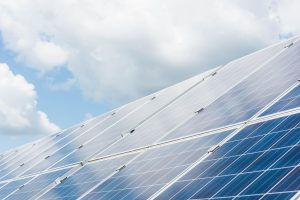Last year, the renewable energy company Sun Cable announced that it had raised $150 million for an ambitious project involving the construction of a 12,000-hectare solar farm in Australia’s Northern Territory. The plan was for excess power generated there to be exported to Singapore via a 4,200-kilometer undersea cable. That plan, the cost of which was estimated to be about $20 billion at the time, is on hold for now as Sun Cable has entered voluntary administration and is currently awaiting restructuring. Reportedly, this stems from a disagreement amongst financial backers about whether the company is commercially viable or not.
In principle, the Sun Cable idea has merit. Northern Australia is rich in land and sunshine and it makes sense to build large-scale solar farms and export excess power generated there to countries that want cleaner energy but face land or other resource constraints. Singapore is such a country, and the leadership has already set up a policy roadmap for importing around 4 gigawatts of low-carbon energy by 2035.
Sun Cable hoped to be one of the suppliers. Indeed, the company envisioned itself as the primary supplier, providing nearly half of Singapore’s clean energy imports in the coming decades. This would be absolutely crucial to the success of the venture, as nobody would invest $20 billion in a project of this scale and complexity without a large guaranteed market for the electricity being produced and exported.
In a press release announcing the voluntary administration Sun Cable claimed the project was “50% over-subscribed for offtake interest in Singapore, having received Letters of Intent for ~2.5GW, versus planned supply of ~1.75GW.” The release doesn’t provide any additional details so it’s not clear who signed the letters of intent or what the terms would be. And while it suggests there is interest on the Singapore side for clean energy imports from Australia, letters of intent are not the same as contractual agreements.
Even then, it always seemed to me the real goal was not just to grab a share of the Singapore electricity market, but to use the island-nation as an entry point to eventually branch out into the wider region where electricity demand in fast-growing countries like Thailand, Indonesia, and Vietnam is ballooning. The project has, after all, been dubbed the Australia-Asia PowerLink, rather than the Australia-Singapore PowerLink. I wrote at the time that this idea faced an uphill battle because countries like Indonesia are not very receptive to imports, especially energy imports.
As it turns out, apparently Singapore is also not terribly enthusiastic about importing clean energy from Australia, at least not 2 gigawatts worth. How do we know that? Mining magnate Andrew “Twiggy” Forrest, one of the two Australian billionaires whose early backing lent the project credibility, explicitly said so. CNN spoke to Forrest during the recent World Economic Forum and reported that “after speaking with representatives from Asia, particularly Singapore, it’s become clear to [Forrest] that they don’t want [the cable].” Mike Cannon-Brookes, the other Australian billionaire supporting Sun Cable, disputed Forrest’s characterization.
However, the most important player here is probably Singapore’s Energy Market Authority, a statutory board under the Ministry of Trade and Investment tasked with securing the country’s energy supply, including approving clean energy import deals. Without EMA approval, Sun Cable has no chance of penetrating the Singaporean market. Since 2021, the EMA has issued two Requests for Proposals from low-carbon energy producers with the goal of sourcing 4 gigawatts of clean energy imports (estimated to be about 30 percent of the national electricity supply) by 2035. Sun Cable is one out of about 30 companies that have submitted proposals.
So far, the EMA has moved forward in measured steps, approving a handful of trials and pilots from clean energy producers in nearby Indonesia, Malaysia and Laos to provide moderate amounts of electricity (100 MW in each deal). For the moment, it seems the EMA is testing out how the market will respond while fine-tuning the regulatory architecture. The current call for proposals closes at end of 2023, after which we should see the pace and scale of approvals accelerate.
What we can say now is that the EMA seems to prefer clean energy produced closer to home, drawing from a variety of regional generators to spread the risk around and not become overly reliant on a single provider. Sun Cable’s plan to supply nearly half of Singapore’s clean energy imports by 2035, via a hugely ambitious undersea cable with very high costs of construction, entails a much higher and unnecessary level of risk. This is not to say that Australia will never be a major supplier of clean energy to the region. But it does seem unlikely that it will happen shortly via this particular cable.

































